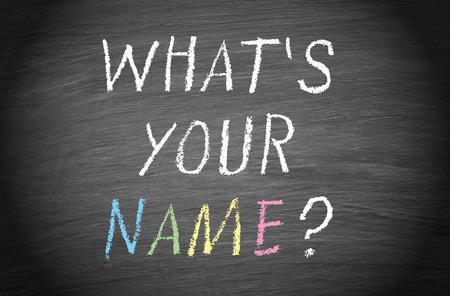As a trademark attorney, one of the most common questions I get from both my trademark clients and potential clients alike is how to properly use the trademark symbols both before and after your trademark has registered. This post will demystify how to properly use the trademark symbols in a simple and easy to understand way.
My goal with this ultimate guide to the common trademark symbols is to help you learn all of the ins and outs of trademark symbol usage, as well as answer all of the most commonly asked questions that I receive about this topic.
Here is an overview of what you can expect in this guide:
Trademark Symbols Explained and Demystified (What you need to know)
When it comes to protecting your brand, a trademark is a vital part of the process. And using the correct trademark symbols in connection with your brand is also incredibly important. In this section, we will discuss briefly what a trademark is, what a trademark symbol is (and why they are important) and when you should use a trademark symbol in connection with your brand.
What is a trademark?
At its core, a trademark is how the public recognizes your brand above all others in the marketplace. A trademark can be anything from a name, to a logo, to a slogan. They can be tied to your overall brand, the name of your podcast, or even a signature course offering or product you sell.
What is important for you to understand is that a trademark is tied to use of the name or logo in commerce. If you aren't using your name in commerce, then you don't have a trademark that you can protect. But the minute you DO start using your brand name in connection with interstate commerce, then it is smart and prudent to register that name as a trademark with the United States Patent and Trademark Office (i.e. USPTO).
It can take anywhere from 12-18 months to register a trademark, so it is important to start that process as soon as you start selling products or services under your brand name.
What is a trademark “symbol” and what is their purpose?
A trademark symbol is either the R with a circle around it (®), a TM symbol, or an SM symbol. Each of these are used in different situations and it is important to understand when and how to properly use these symbols in connection with your brand.
When should you use a trademark symbol in connection with your brand?
Anytime you develop a brand name that you want to claim trademark rights to, you should start using a trademark symbol in connection with that name.
Using the correct trademark symbol signifies that you are claiming “common law” rights (i.e. trademark ownership) to your trademarks, even before you have decided to pursue a Federal Registration with the USPTO.
Why are the trademark symbols important?
Trademark symbols are important because they are a means to put other potential competitors on notice that you are seeking to protect your intellectual property. In this way, if any other entrepreneur sees your brand and is considering stealing your name, they have constructive notice that you are claiming trademark rights over your brand name.
An Overview of the Various Trademark Symbols
In this section, we will review the various trademark symbols that you have probably seen in the marketplace, review several examples of these symbols in use, discuss what they mean and how they differ from one another, and help you decide which symbol you should be using in connection with your brand.
In addition, we will briefly review the process to get the coveted ® symbol.
How many trademark symbols are there?
There are three (3) trademark symbols that you must be aware of to keep your intellectual property protected. These are ®, TM, and SM.
What are the trademark symbols you must be aware of?
There are three primary trademark symbols for you to be aware of when it comes to protecting your intellectual property.
The first, and most recognized symbol is the R with a circle around it (®). This symbol is reserved for registered trademarks only.
The next most recognized symbol is TM which is an abbreviation for “trademark”. This symbol is for anyone wanting to claim the legal rights to their brand name. You do not need to have a registered trademark.
The least used symbol is SM, which stands for “service mark”. This is for anyone selling services in connection with their trademark. You need not have a registered trademark.
What do the trademark symbols mean?
The R with a circle around it (®) means that the mark connected to that symbol is a registered trademark. This means that the trademark owner has applied for and received a registered trademark with the USPTO. They could be selling goods or services under that trademark. Regardless, they have the exclusive right to use that trademark in connection with the goods or services they listed on their trademark application.
Their mark could be listed on either the principal register (which is more common) or the supplemental register. Either way, the owner of that mark has legal rights in the mark and is able to enforce those rights in federal court.
It is important to note that the ® symbol is limited to trademark owners who have received a federal registration. If you use this symbol in connection with your brand name but have NOT received a federal registration, there could be severe consequences if you decide to attempt to register your trademark at some point in the future.
The TM symbol means that the owner of the mark is claiming their trademark rights, but have not yet received a federal registration. They may or may not have filed an application with the USPTO. Anyone can use the TM symbol, regardless of whether they have received a federal trademark registration, which means that even unregistered trademarks may use the TM symbol. The TM symbol is typically reserved for the sale of goods as opposed to services.
The SM symbol also means that the owner of the mark is claiming their trademark rights, but have not yet received a federal registration. Again, they may or may not have filed an application with the USPTO and anyone can use the SM symbol, regardless of whether they have received a federal trademark registration. The SM symbol is short for “service mark” and is typically used in connection with the sale of services rather than goods.
The C with a circle (©) is NOT a trademark symbol. Rather, it is the copyright symbol showing that you are claiming copyright protection to your creative work. So if you see this, understand that it has nothing to do with trademark law.
Recognizable examples of the trademark symbols
Everyday you probably come into contact with hundreds of registered trademarks, and many unregistered marks as well. It is possible to claim common law trademark rights and use the ™ or SM symbols, although you could subject yourself to legal action if you use the registered symbol (®) without a registered trademark.
Here are a few examples of trademarks you are likely familiar with. See if you notice the trademark symbols they are using in connection with their trade mark.
How does the ® symbol differ from ™ or SM?
The major difference between the ® symbol and the TM or SM symbols is that the ® signifies that the trademark is registered, whereas the other symbols indicate merely that the owner of the brand is claiming trademark rights, but the brand it self is not registered with the USPTO.
How to decide which symbol to use in connection with your brand?
To decide which trademark symbol you should use in connection with your brand, you must go through a simple, 2-question analysis.
First, do you have a registered trademark? In other words, did you (or your lawyer) file an application with the USPTO and receive a trademark certificate back once your application went through the long and arduous process of being prodded, examined, published, etc. by the examining attorney assigned to your file?
Most people make the mistake of thinking that they own their trademark as soon as the application is filed. This is a huge mistake. You don't own your trademark unless or until you have a stamped certificate and registration number from the USPTO. You will know when this happens because they will notify you or your lawyer (via email) that your trademark has registered.
If you aren't sure, you can always look up the status of your application at the USPTO website. Just click here and then enter the name of your trademark to look up the status.
How to get the coveted ® symbol?
The only to get the ® symbol and to legally use it is to register your trademark with the USPTO. If you attempt to use the R with a circle around it BEFORE you have registered your trademark, then you could face severe penalties. The registration process takes anywhere from 12-18 months, assuming you don't run into any legal hurdles along the way. Having a registered trademark will provide you with legal protection that you do not have when you are asserting only common law rights.
Unlawful or unauthorized use of the circled “R” (®) symbol constitutes trademark fraud and could not only result in the cancellation of your trademark (in the event you are able to register your mark) but also lead to additional penalties and sanctions under Federal Law.
Why Get Your Trademark Registered?
Before we go into where you should put your trademark symbols, lets touch briefly on why you should even consider registering your trademarks.
The first and most obvious reason is to protect your brand from trademark infringement. This can happen when someone rips off your brand or your business name. This can be intentional or unintentional, but the effect is the same – to dilute your brand. As the registered owner of a trademark, you have significantly more legal rights to your brand name and word marks. You can publish promotional material regarding your brand without fear that someone will knock off your brand.
And secondly, with a registered trademark you can make use of the registered trademark symbol in connection with your brand.
Where to put the Trademark symbols
Another common question I get from entrepreneurs and clients is where they should put the trademark symbols in connection with their brand name, slogans and logos.
Where to put the Trademark Symbol in connection with your word mark?
If you have a word mark, then you would typically place the appropriate symbol after the last word in your trademark as either a superscript or subscript.
For example, the legal template store ONE STOP LEGAL has applied for a trademark but it hasn't yet registered yet.
In this case, the brand would use the TM symbol and place it after the word LEGAL. (i.e. One Stop Legal™) This signifies that the brand is claiming trademark protection for the name One Stop Legal, but that the trademark has not yet registered.
On the other hand, we sell a series of courses to teach entrepreneurs how to protect their businesses legally, and the series is called “LOCK it Down”. In this case, the trademark is registered. So rather than use the TM symbol, we can use the circle R, i.e. LOCK it Down®.
There is a third potential scenario that is limited to brands that sell services under their trademark (rather than products) and have NOT registered their trademark yet. In this case, you would use the service mark symbol (SM). This is uncommon, but is a possibility if you are a service provider.
Where to put the Trademark Symbol in connection with your logo?
If you have a logo, you would follow the same guidelines as referenced above, but you would put the symbol to the upper or lower right of your logo.
Where to put the Trademark Symbol in connection with a phrase or slogan?
If you are claiming trademark rights to a phrase or slogan, you would follow the same guidelines as mentioned above for a word mark. You would place the appropriate symbol at the end of the phrase or slogan as either a superscript or subscript.
Where to put the Trademark Symbol on a product you are selling?
If you are selling a product, you should include your brand name somewhere on the packaging or on the product itself. You would include the appropriate symbol somewhere near the brand name you have registered as a trademark or near the name or symbol that you claim trademark protection for (in the case of a TM or SM symbol).
When Should You Use the Trademark Symbol?
It is important to properly use the trademark symbols in connection with your brand name, product, slogan or logo that you are claiming trademark rights to. However, you don't need to them every time you use your trademark.
Instead, you should use the trademark symbol the first time you refer to your brand in an article, blog post, or on a web page. If you are selling a product, you may include it in the product name, but not in the description of the product.
In a blog post or sales page, you may use the symbol the first time you refer to your brand, but not on the remainder of the page. It is important to let the public know that you are claiming your trademark rights, but not bang them over the head with it repeatedly.
When to use the Trademark Symbol?
If you have a name that you are interested in protecting as a trademark, then you should use the TM symbol in connection with that name. You can use the trademark symbol (TM) either before you have registered your name, while your application is pending, after your trademark has registered or even if you never intend to file for trademark protection. The same guidelines apply to the SM symbol.
However, the circle R symbol (®) is reserved only for registered trademarks at the Federal level. If you have applied for a trademark, but it hasn't yet registered, you cannot use this symbol.
When NOT to use the Trademark Symbol?
If you have not received a registered trademark, then under no circumstances should you use the circle R symbol. To do so constitutes trademark fraud (as discussed before) and can lead to severe penalties.
How often must you use the Trademark Symbols?
Whenever you are creating a new brand, or have developed a new product or slogan that you intend to use in commerce, you should always use the TM or SM symbol in connection with that name or slogan.
It is important to let the world know that you are claiming trademark rights to your branding and help deter potential infringers.



